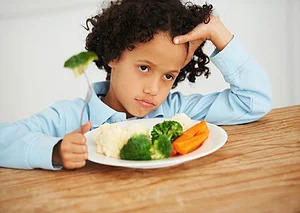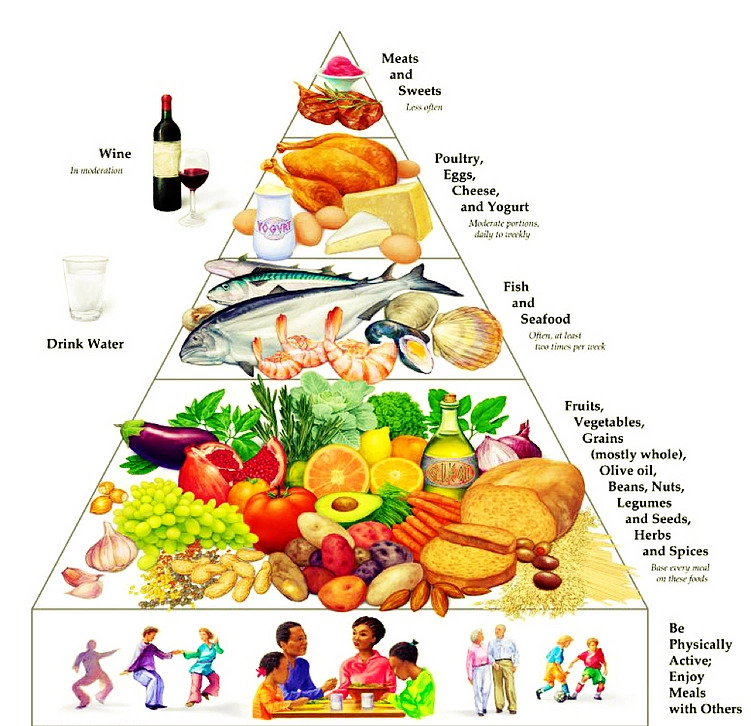Help, I have a Fussy Eater?
Prue Matar

BHSc – Nutritional and Dietetic Medicine
Is your child a fussy eater?
Do you struggle to get your child to eat nutritious foods?
Are you concerned with the amount your child eats and the quality of their diet?
Or do you simply want to know what is best to feed your child?
You are not alone.
I see many parents in clinic concerned with their child’s diet and eating habits.
As parents we are our children’s first and most influential role model, especially when it comes to food and eating habits, and the fact is, the eating habits that our children foster now have a flow on effect to later life.
Good nutrition is the foundation for all areas of health. YES ALL AREAS OF HEALTH.
“Genes load the gun, but environment and lifestyle pull the trigger!”
It is estimated that genetics alone only account for 10% of diseases. And with dietary and lifestyle interventions you may be able to prevent developing a condition.
Fundamentally meaning, diet and lifestyle factors are KEY to preventing many chronic diseases.
As well as a preventative measure for overall health, optimal nutrition can positively impact upon a child’s behaviour, IQ, growth, skin health and dental wellbeing.
So, your child is a fussy eater, what can you do to positively promote healthy eating habits?
- Remain calm, you got this. You are not going to change their whole world overnight, yet small changes can make a big difference.
2. Model healthy eating habits. Ensuring that you are eating regular nutrient dense meals yourself. Keep the language positive, avoid talking about weight, and calories in front of your child. Work on your own positive body image.
3. The goal is to aim for 5 serves of vegetables and 2 serves of fruit per day. Variety is essential to meeting the required nutrients. Eat a rainbow of varied fruit and vegetables daily.
4. Ensuring balance in meals of a protein source, carbohydrate source and vegetables with each meal.
5. Get the kids involved. Allow your child to shop with you for fruits and vegetables, they can choose a new vegetable they would like to try per week. Have the children help wash, prepare and cook the vegetables and meals. Allow your child to help make decisions and assist packing their school lunches.
6. Make it fun. Themed foods and food faces can make a big difference. Just like adults, kids eat with their eyes first. Try pizza faces, fruit on sticks, fruit and vegetable boats and fun designs. Themed nights like; taco Tuesdays, Falafel Fridays can also prove successful. Resources from www.kidspot.com.auand healthykids.nsw.gov.au offer some fun kids recipes.
7. Eat together as a family. Food is a social experience. Avoid T.V. while eating.
8. Limit packaged foods as these are often energy dense but nutrient poor. Avoid other fillers like breads, cakes, muesli bars and refined carbohydrates. Replace with fresh fruit and vegetables, homemade savoury muffins, quiches, bliss balls.
9. If offering snacks, ensure they are nutrient dense. Broccoli and cauliflower florets, capsicum, celery, carrot and cucumber sticks, snow peas or green beans.
10. Keep food and eating a positive experience. Avoid making threats or bribes. Avoid offers of ‘if you eat your f food you will get ice cream’, as this fosters poor relationships with food later in life. Eventually they will eat a variety of family meals as long as no alternatives are offered.
11. Remember that it takes time to introduce new foods or flavours. It may take up to 8 times tasting a food to develop a taste for it. Keep patient and continue to offer new foods.
12. If you are still struggling with increasing vegetables you can ‘hide’ vegetables into foods like spaghetti bolognaise, sausage rolls, hummus, muffins, smoothies. It is advisable to allow the child the autonomy of choosing their own healthy foods and to educate them on what they are eating and why rather than hiding veggies.
13. Exercise is important and aids in gaining a healthy appetite, as is fresh air and safe sun exposure. Children require an hour a day of movement.
14. Breakfast is imperative for children’s cognitive and physiological growth, development and concentration. Ditch the ‘up and go’ and replace with a nutrient dense smoothie that can be made the night before for convenience OR Keep boiled eggs on hand in the fridge to grab and go, make overnight oats in individual containers to eat when in a hurry, or Greek yoghurt topped with berries and granola.
Nutrient deficits can contribute to a loss of appetite, lack of sleep, delayed development, growth and lack of concentration. If you are concerned about your child’s nutrient status, start with the above steps and if you need more guidance or support get in touch. We can assess and address nutrient deficits and offer supplementation with a high quality individualised supplement and treatment plan to fill the nutrient gaps until we get them eating a varied balanced diet.
If you have any concerns please see your GP or health professional.
I have included a recipe for a quick and easy breakfast on the go. Ditch the Up and Go and opt for this nutrient dense version. Tasty and delicious for the whole family.
‘Chocolate Thickshake’ Smoothie.
Perfect as a breakfast smoothie
Makes 4-5 servings
Prep time
10 min.
Ingredients
- 1 litre of almond milk, coconut milk or milk of choice
- 2 Tbsp chia seeds
- 2 Tbsp LSA
- 3 tablespoons of protein powder (Optional, I like Raw Amazonia Pea or rice protein powder)
- 1/3 cup of cacoa powder
- 2 frozen bananas
- 1 handful of frozen fresh baby spinach
- 2 -3 florets of lightly steamed and frozen cauliflower (steam in bulk and freeze in zip lock bags for smoothies on demand. Tasteless in smoothies)
- 2-3 chunks of steamed and frozen zucchini (again steam in bulk and freeze in zip lock bags for smoothie additions as needed. Also tasteless)
- 2 tablespoons of raw organic honey
- 2 tablespoons of kefir, or Greek yoghurt (optional) OR a probiotic capsule
- 1 tablespoon of un hulled tahini or peanut butter (also optional)
- Add ice as desired
Method
Combine all in blender. Blitz till completely smooth. Pour into mason jar with lids. Breakfast on the go. Can remove the cacoa powder and add in frozen berries for a delicious berry smoothie.
Is your child a fussy eater?
Do you struggle to get your child to eat nutritious foods?
Are you concerned with the amount your child eats and the quality of their diet?
Or do you simply want to know what is best to feed your child?
You are not alone.
I see many parents in clinic concerned with their child’s diet and eating habits.
As parents we are our children’s first and most influential role model, especially when it comes to food and eating habits, and the fact is, the eating habits that our children foster now have a flow on effect to later life.
Good nutrition is the foundation for all areas of health. YES ALL AREAS OF HEALTH.
“Genes load the gun, but environment and lifestyle pull the trigger!”
It is estimated that genetics alone only account for 10% of diseases. And with dietary and lifestyle interventions you may be able to prevent developing a condition.
Fundamentally meaning, diet and lifestyle factors are KEY to preventing many chronic diseases.
As well as a preventative measure for overall health, optimal nutrition can positively impact upon a child’s behaviour, IQ, growth, skin health and dental wellbeing.
So, your child is a fussy eater, what can you do to positively promote healthy eating habits?
- Remain calm, you got this. You are not going to change their whole world overnight, yet small changes can make a big difference.
2. Model healthy eating habits. Ensuring that you are eating regular nutrient-dense meals yourself. Keep the language positive, avoid talking about weight, and calories in front of your child. Work on your own positive body image.
3. The goal is to aim for 5 serves of vegetables and 2 servings of fruit per day. Variety is essential to meeting the required nutrients. Eat a rainbow of varied fruit and vegetables daily.
4. Ensuring balance in meals of a protein source, carbohydrate source and vegetables with each meal.
5. Get the kids involved. Allow your child to shop with you for fruits and vegetables, they can choose a new vegetable they would like to try per week. Have the children help wash, prepare and cook the vegetables and meals. Allow your child to help make decisions and assist packing their school lunches.
6. Make it fun. Themed foods and food faces can make a big difference. Just like adults, kids eat with their eyes first. Try pizza faces, fruit on sticks, fruit and vegetable boats, and fun designs. Themed nights like; taco Tuesdays, Falafel Fridays can also prove successful. Resources from www.kidspot.com.auand healthykids.nsw.gov.au offer some fun kids recipes.
7. Eat together as a family. Food is a social experience. Avoid T.V. while eating.
8. Limit packaged foods as these are often energy dense but nutrient poor. Avoid other fillers like breads, cakes, muesli bars and refined carbohydrates. Replace with fresh fruit and vegetables, homemade savoury muffins, quiches, bliss balls.
9. If offering snacks, ensure they are nutrient dense. Broccoli and cauliflower florets, capsicum, celery, carrot and cucumber sticks, snow peas or green beans.
10. Keep food and eating a positive experience. Avoid making threats or bribes. Avoid offers of ‘if you eat your f food you will get ice cream’, as this fosters poor relationships with food later in life. Eventually they will eat a variety of family meals as long as no alternatives are offered.
11. Remember that it takes time to introduce new foods or flavours. It may take up to 8 times tasting a food to develop a taste for it. Keep patient and continue to offer new foods.
12. If you are still struggling with increasing vegetables you can ‘hide’ vegetables into foods like spaghetti bolognaise, sausage rolls, hummus, muffins, smoothies. It is advisable to allow the child the autonomy of choosing their own healthy foods and to educate them on what they are eating and why rather than hiding veggies.
13. Exercise is important and aids in gaining a healthy appetite, as is fresh air and safe sun exposure. Children require an hour a day of movement.
14. Breakfast is imperative for children’s cognitive and physiological growth, development and concentration. Ditch the ‘up and go’ and replace with a nutrient dense smoothie that can be made the night before for convenience OR Keep boiled eggs on hand in the fridge to grab and go, make overnight oats in individual containers to eat when in a hurry, or Greek yoghurt topped with berries and granola.
Nutrient deficits can contribute to a loss of appetite, lack of sleep, delayed development, growth and lack of concentration. If you are concerned about your child’s nutrient status, start with the above steps and if you need more guidance or support get in touch. We can assess and address nutrient deficits and offer supplementation with a high quality individualised supplement and treatment plan to fill the nutrient gaps until we get them eating a varied balanced diet.
If you have any concerns please see your GP or health professional.
I have included a recipe for a quick and easy breakfast on the go. Ditch the Up and Go and opt for this nutrient dense version. Tasty and delicious for the whole family.
‘Chocolate Thickshake’ Smoothie.
Perfect as a breakfast smoothie
Makes 4-5 servings
Prep time
10 min.
Ingredients
- 1 litre of almond milk, coconut milk or milk of choice
- 2 Tbsp chia seeds
- 2 Tbsp LSA
- 3 tablespoons of protein powder (Optional, I like Raw Amazonia Pea or rice protein powder)
- 1/3 cup of cacoa powder
- 2 frozen bananas
- 1 handful of frozen fresh baby spinach
- 2 -3 florets of lightly steamed and frozen cauliflower (steam in bulk and freeze in zip lock bags for smoothies on demand. Tasteless in smoothies)
- 2-3 chunks of steamed and frozen zucchini (again steam in bulk and freeze in zip lock bags for smoothie additions as needed. Also tasteless)
- 2 tablespoons of raw organic honey
- 2 tablespoons of kefir, or Greek yoghurt (optional) OR a probiotic capsule
- 1 tablespoon of un hulled tahini or peanut butter (also optional)
- Add ice as desired
Method
Combine all in blender. Blitz till completely smooth. Pour into mason jar with lids. Breakfast on the go. Can remove the cacoa powder and add in frozen berries for a delicious berry smoothie.


